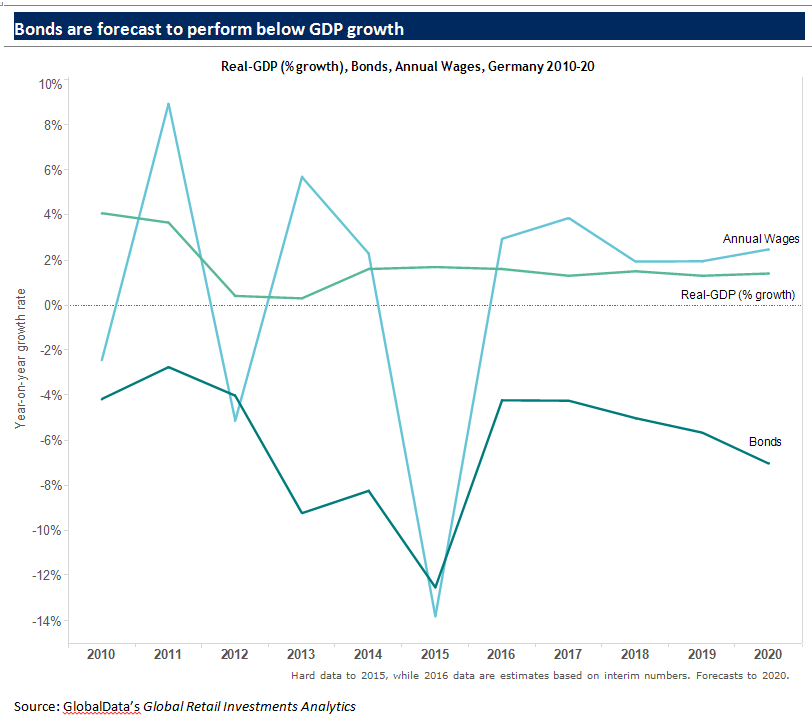Low and negative returns on bonds have impacted real returns and preferences of German investors.
Being regarded as a safe investment in times of uncertainty, bonds tend to have a negative correlation to GDP.
However, despite the turbulent economic environment in Germany and the wider region, this asset class has had little appeal to investors considering its low and negative yields.
Click to enlarge
With the European Union hovering on the brink of deflation, the European Central Bank announced a further extensive quantitative easing (QE) scheme in March 2016, which has further impacted this asset class. The current QE program is due to continue until December 2017.
How well do you really know your competitors?
Access the most comprehensive Company Profiles on the market, powered by GlobalData. Save hours of research. Gain competitive edge.

Thank you!
Your download email will arrive shortly
Not ready to buy yet? Download a free sample
We are confident about the unique quality of our Company Profiles. However, we want you to make the most beneficial decision for your business, so we offer a free sample that you can download by submitting the below form
By GlobalDataAs a result of continued poor yields, retail investor preferences are unlikely to change over the coming years.
Bond holdings are expected to record a negative compound annual growth rate of 5.2 percent between 2016 and 2020.
Bond holdings, as a proportion of total retail investments, will decline from just under 10 percent (or $308bn) in 2010 to 3.8 percent ($137bn) in 2020.
Defaults and insolvencies in Germany’s SME corporate bond market (Mittelstand) have even brought this once growing area of the market to a standstill.
Complaints over a lack of transparency and disclosure are also leading to an overhaul of this sector.








